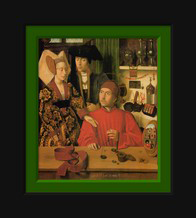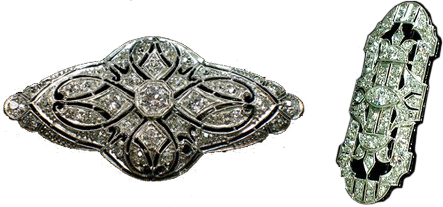I Don’t Guess
It will take me, on average, at least an hour to complete each item. The jewelry will be cleaned so that I can accurately grade its color, clarity and cut (read Diamond Cleaning Secrets). Metal, design, and workmanship will be checked. Stones will be identified and gem-tested, if necessary. I don’t take your jewelry apart to weigh your gemstones; instead, I carefully measure each mounted stone with gem instruments and use accepted mathematical formulas to estimate their weight. Under ideal conditions, I can determine the weight of a gem exactly. Other times, I will be close (that is, within accepted tolerances). If you have a GIA, AGS, or other lab certificate, or if you have a store receipt, I will want to see it so please bring it along. I will verify that the stone matches the certificate. In many cases, the certificate is cited in the finished appraisal and can add value to your stone. The certificate or receipt occasionally helps me crosscheck and refine my work, specifically regarding gem weights. GIA or many other lab graders will have had the opportunity to weigh and evaluate your stone loose, but I will be working within the limitations of your mounting and the stone measurements I am able to take. Regardless of whether or not there is a certificate or receipt or earlier appraisal, I do all of my grading and measuring from scratch.
What You Get
Before I arrive at the dollar value I assign your jewelry, we’ll clearly define the intended use of your fine jewelry appraisal. Insurance replacement? Dissolution of marriage? Equitable division? We will clarify the type and definition of value appropriate for your appraisal and the proper market level to research. I may need to find antique earring “comps” or consult The Guide and The Rapaport Diamond Report which are regularly published price guides, comparable to The Kelley Blue Book for cars, with comprehensive price charts reflecting current market conditions, based on carat weight, color, shape, clarity, and proportion grade. Additional market research includes experts in specific jewelry niches, estate or tax law, and other sources. Antique pieces, watches, unusual gems, and other specialty pieces usually require additional research and time.
Appraisals can be performed for a number of functions including dispute, estate dissolution, resale, damage evaluation, donation value, and so on. I am increasingly called to provide confirmation of purchase: does this item match the its seller’s description? A different approach may be needed in these cases to satisfy legal requirements. This may take more time and research as well.
Determining what your jewelry is worth is not merely writing a receipt. I determine first, in detail, exactly what your jewelry is. I then evaluate it in relation to the current and appropriate market. Only then can I create an accurate and explicit document describing your jewelry, which is the crux of the work you are paying me to do. An appraisal document signed by an independent (I work for myself and I do not buy or sell jewelry, diamonds, gemstones or gold) Graduate Gemologist is vital in the event of an insurance claim, purchase dispute, etc. In addition to providing appropriate insurance documentation, the appraisal should result in peace of mind for you regarding your purchase – or your sale.
An appraisal substantiates the bottom-line, or dollar-value, that it assigns.
The portfolio I give you includes basic information explaining the scope of work done in the appraisal and what it means. It includes a list of questions you should ask your insurance provider so that you understand how a loss may be covered. My credentials are also included so that both you and your insurance company know that your documents were prepared professionally.
I think you will be very pleased with the appraisals I am going to produce for you.
Susan Schwartz, GG (GIA)



